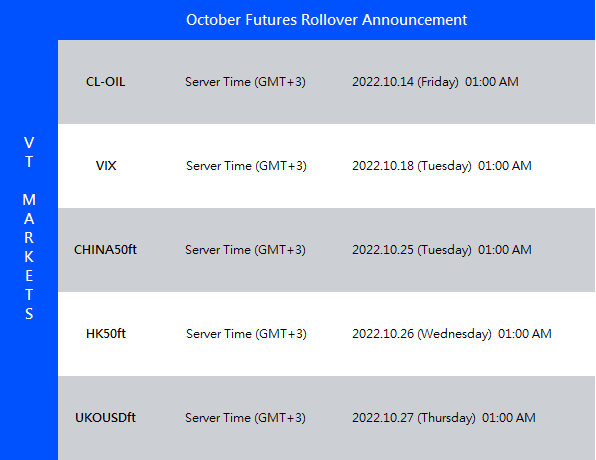U.S. equities ended the week with a sharp drop throughout last Friday’s trading. The Dow Jones Industrial Average dropped 630 points to close at 29296.79. The S&P 500 slid 2.8% to close at 3639.66. The tech-heavy Nasdaq composite lost 3.8% to close at 10652.4. U.S. equities fell as the unemployment rate and payrolls jumped above market expectations. U.S. unemployment rate printed 3.5%, beating market expectations of 3.7% as the labour participation rate edged lower to 62.3%. U.S. nonfarm payrolls increased by 263,000 for the month, beating market expectations of 275,000. The upside surprise on the labour market has damped equities outlook as market participants interpreted Friday’s economic data release as favouring further tightening by the Fed.

Average hourly earnings rose 0.3% over the month, in line with market expectations. Further dissecting the jobs report—leisure and hospitality led to gains in hiring as the sector increased by 83,000 jobs. The healthcare sector generated 60,000 positions, while business services and manufacturing contributed 68,000 jobs. Markets are now widely expecting the Fed to continue the pace of its rate hikes with another 75 basis point increase in November.

Main Pairs Movement
The Dollar index rose 0.43% throughout last Friday’s trading. The upside shock of private sector hiring has decimated any notion that the Fed will ease its pace of tightening. A rise in expectations on short-term interest rates aided the Dollar to close the week in positive territory. Market participants will now turn their attention to the U.S. CPI data, which is scheduled to be released on October 13th.
EURUSD lost 0.52% throughout Friday’s trading. Selling pressure for EURUSD mounted as U.S. job reports were released. A robust U.S. job market has pointed to further interest rate hikes by the Fed.
GBPUSD lost 0.62% throughout Friday’s trading. Cable fell as the U.S. Greenback gained momentum after the release of better-than-expected job reports.
XAUUSD fell 1.04% throughout last Friday’s trading. The precious metal fared worse against the Dollar as bidding for the Greenback returned due to a rise in short-term interest rate expectations.
Technical Analysis
EURUSD (4-Hour Chart)

The EUR/USD pair declined further on Friday, witnessing some fresh selling and dropped to one-week lows near the 0.9750 level following the release of the US official employment report. The pair is now trading at 0.9806, posting a 0.75% loss daily. EUR/USD stays in the negative territory amid a stronger US dollar across the board, as the greenback gained upside momentum and climbed to a fresh weekly high after the release of the Nonfarm Payrolls report. The US Nonfarm Payrolls rise by 263,000 in September, which came in better than the market expectation of 250,000 and reaffirmed Fed rate hike bets. The prevalent risk-off mood is also exerting additional pressure on the EUR/USD pair. For the Euro, the data released earlier in the session showed that Germany’s Retail Sales contracted 4.6% YoY in August and Industrial Production dropped 0.8%.
For the technical aspect, RSI indicator 38 figures as of writing, suggests that the sellers remain on the sidelines for the time being as the RSI has been moving sideways. As for the Bollinger Bands, the price remained under pressure and moved alongside the lower band, therefore the downside traction should persist. In conclusion, we think the market will be bearish as the pair tests the 0.9755 support. Sustained weakness below that support should favour the bears and remain the pair’s bearish view.
Resistance: 0.9836, 0.9921, 0.9986
Support: 0.9755, 0.9664, 0.9551
GBPUSD (4-Hour Chart)

The GBPUSD tumbled on Friday, falling to a level around 1.1100 at the time of writing, as the upbeat US NFP data reaffirms Fed rate hike bets and acts as a tailwind for the bucks. The US dollar reverses an intraday dip and climbs to a fresh weekly high after the headline NFP report showed that the US economy added 263K new jobs in September. The reading marks a notable slowdown from the 315K reported in the previous month, though surpasses consensus estimates for a reading of 250k. Moreover, the US unemployment rate fell to 3.5% during the reported month from 3.7% in August, reaffirming hawkish Fed expectations. This, in turn, remains supportive of elevated US Treasury bond yields and underpins the greenback, which exerts some pressure on the GBP/USD pair. Apart from rising bets for a more aggressive policy tightening by the Fed, the prevalent risk-off mood is seen as another factor benefitting the safe-haven greenback. In the UK zone, the cables are weighed down by concerns about the UK government’s fiscal policy and looming recession risks.
From the technical perspective, the RSI indicator figures 40 as of writing, implying the downside momentum would persist and test the lowest level of 1.1090 since October. As for Bollinger Band, the price broke through the lower band at the moment of NFP data released, then continued wandering in the lower middle area, a signal telling the pounds would probably be bearish for a while.
Resistance: 1.1380, 1.1475, 1.1715
Support: 1.1090, 1.0800, 1.0650, 1.0390
XAUUSD (4-Hour Chart)

The XAUUSD price dropped below the $1,700 figure, in the aftermath of the US jobs report. Before the US Nonfarm Payrolls report was released, the yellow metal meandered around $1710. However, once the headline crossed newswires, gold’s initial reaction slid towards the $1700 region, but the initial move dissipated. As of writing, it rebounded from $1690 to $1702 in a volatile reaction. Data-wise, a report from the US Bureau of Labor Statistics (BLS), showed that the US economy added 263K new jobs, smashing estimations of 250K, while the Unemployment Rate ticked lower to 3.5%, from 3.7% expectations, which would further cement the case for Fed rate hike. US Treasury bond yields pushed to the upside, with the US 10-year Treasury bond yield advancing 3 bps, at 3.865%, while the US Dollar Index, a gauge of the bucks value vs. six currencies, is up 0.28%, at 112.565.
From the technical perspective, the RSI indicator figures 50 as of writing, showing a more stable status, would hover in the range of $1,695 to $1,712. As for Bollinger Band, the price was breaking through the moving average and touching the lower band, indicating that the price might slight rebound and wander in the lower area of Bollinger Band.
Resistance: 1712, 1725, 1740
Support: 1663, 1644, 1620





































